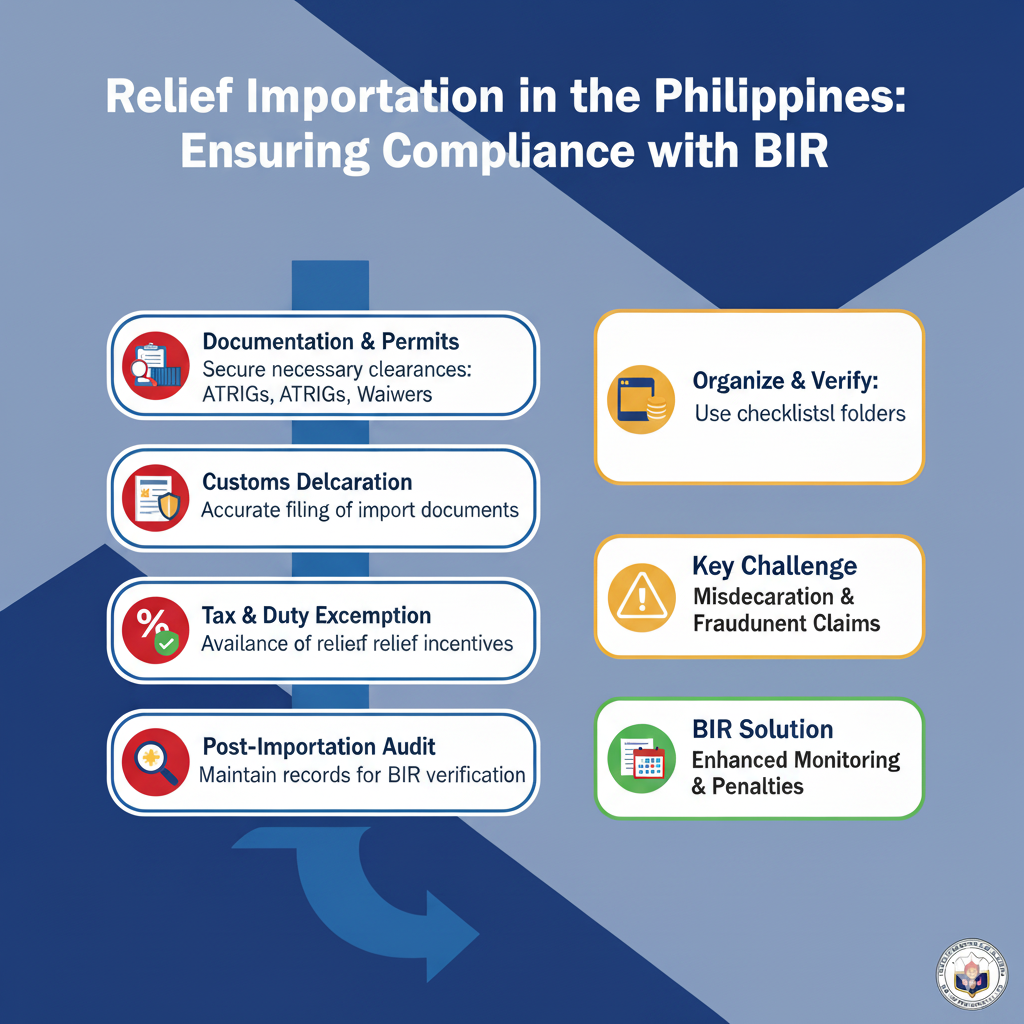Address
Kaypian, San Jose Del Monte City, Bulacan Philippines
Work Hours
Monday to Friday: 8AM - 6PM
Weekend: 10AM - 5PM
Address
Kaypian, San Jose Del Monte City, Bulacan Philippines
Work Hours
Monday to Friday: 8AM - 6PM
Weekend: 10AM - 5PM


Integrated HR. Accurate Payroll.


Integrated HR. Accurate Payroll.

For businesses engaged in importing goods into the Philippines, compliance with the Bureau of Internal Revenue (BIR) is more than just filing income tax and VAT returns. Importers are also required to submit Relief Importation reports under the BIR’s RELIEF (Reconciliation of Listings for Enforcement) System.
In this article, we’ll explore what Relief Importation is, why it matters for VAT compliance, the step-by-step filing process, and the most common mistakes businesses make when submitting their reports.
Relief Importation is the report of all import transactions made by a VAT-registered taxpayer within a specific reporting period. It forms part of the electronic submissions required by the BIR for monitoring and validating VAT payments.
Purpose of Relief Importation Reporting:
Businesses that must file Relief Importation include:
👉 Non-VAT registered businesses are generally not required to file Relief Importation.
The Relief Importation file must include:
❌ Error 1: Incorrect Import Entry Numbers
Mismatches between Bureau of Customs (BOC) records and your Relief Importation file can trigger errors.
Fix: Verify Import Entry Numbers before submission.
❌ Error 2: Wrong VAT Amounts
If VAT paid on importation does not match what is declared in your VAT return, the BIR may flag your submission.
Fix: Cross-check VAT amounts in the SLI against Form 2550Q (Quarterly VAT Return).
❌ Error 3: Missing or Incomplete Importation Details
Failure to encode required details such as BOC office or supplier name leads to invalid files.
Fix: Ensure all fields in the Relief System are properly filled.
❌ Error 4: Late Filing
The deadline for Relief Importation filing is 30 days after the close of each quarter. Missing this can result in penalties.
Fix: Always mark deadlines and file early.
✅ Keep import documents organized and updated.
✅ Reconcile import data with VAT returns before submission.
✅ Use accounting software for easier tracking.
✅ File ahead of deadlines to avoid last-minute errors.
✅ Train staff handling BIR compliance on proper reporting.
Relief Importation in the Philippines is an essential requirement for VAT-registered importers. By understanding its purpose, following the step-by-step process, and avoiding common errors, businesses can ensure smooth compliance with the BIR.
Remember, proper Relief Importation filing not only avoids penalties but also strengthens your company’s credibility with tax authorities.